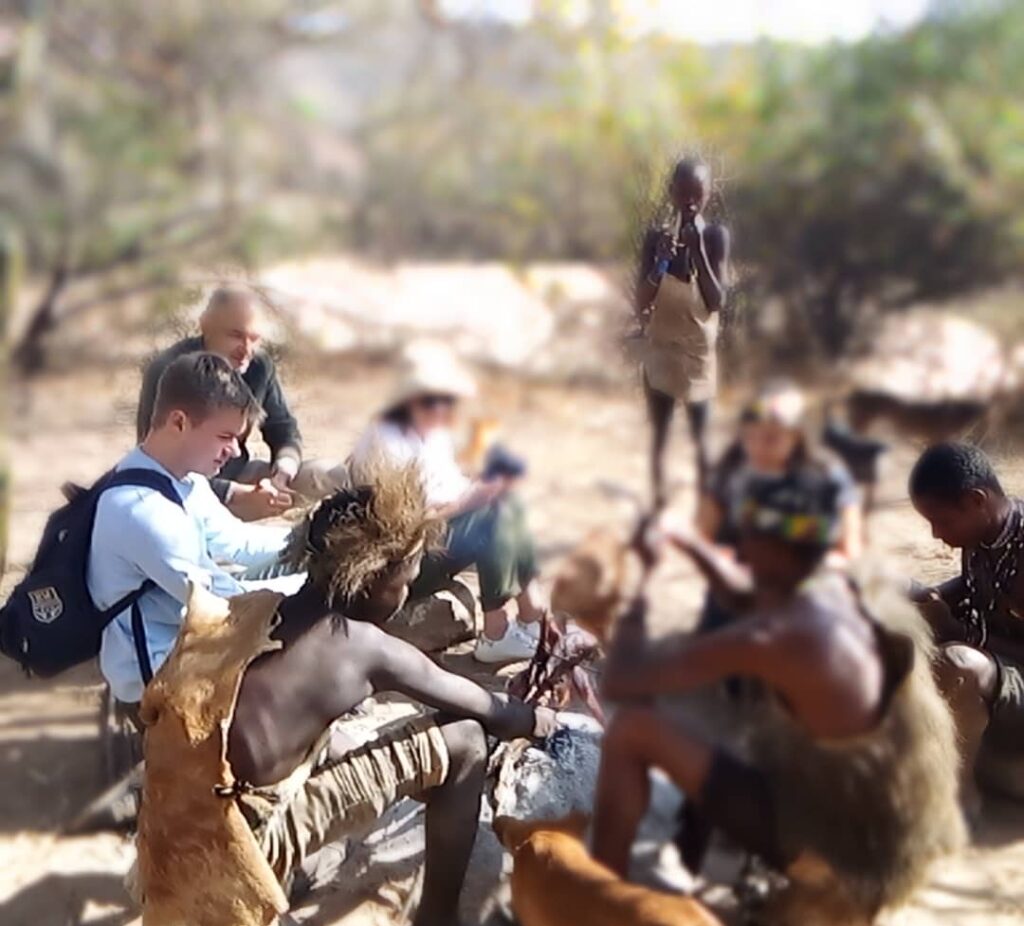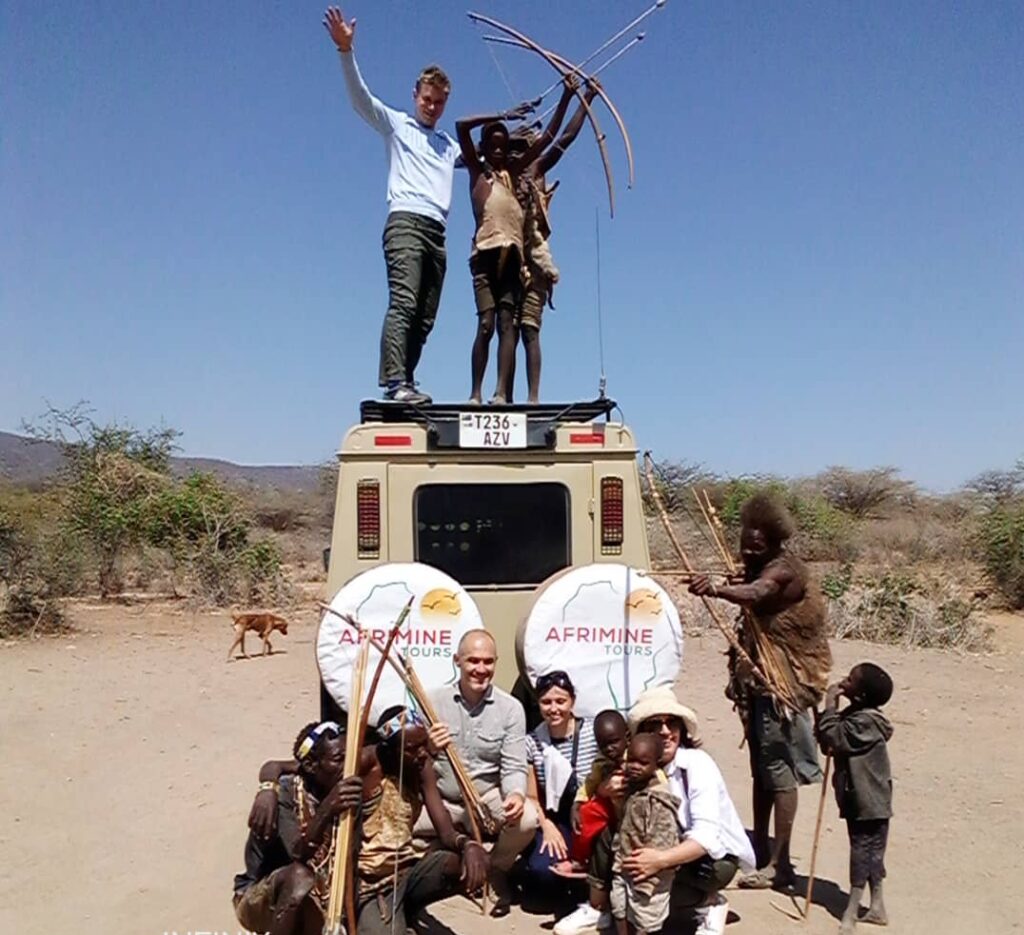The Tribes of East Africa: The Hadzabe Tribe at Lake Eyasi
While the Maasai people are well-known to many visitors who travel to Africa, the Hadzabe tribe of Tanzania’s Lake Eyasi region is as well fascinating and interesting of the African culture.
https://www.afriminetours.com/
The Hadzabe Tribe is a long-established indigenous group that has lived successfully around Lake Eyasi for countless years. In addition to being a natural wonder located in Tanzania’s Great Rift Valley, Lake Eyasi also holds significant cultural value to the Hadzabe people. Here we delve into the fascinating culture of the Hadzabe Tribe, exploring their special customs, language, way of life, and spiritual beliefs.
Maasai beadwork is created in a diversity of colors and careful craftsmanship. The art form includes various wearable and decorative items, including in love detailed beaded jewelry, ceremonial garments, and ornamental accessories. Each piece is a labor of love, skillfully crafted by talented artisans who have grounded their skills over years of dedicated practice.
Facts About The Hadzabe Tribe
DEEP HERITAGE
The Hadzabe tribe is an indigenous group primarily found in the Lake Eyasi region of northern Tanzania. They are one of the very few remaining authentic hunter-gatherer tribes in Africa, having maintained their traditional way of life for over 10.000 years while residing in the region. The Hadzabe are a small community of less than 1.000 people who value their traditional methods and harmonious coexistence with nature.

The distinctiveness of their culture and way of life gives anthropologists, scientists, and other researchers a lot to learn. The tribe has lived in isolation from the rest of the world for thousands of years. Hunting and gathering are more than a source of subsistence and a way of life for the Hadzabe tribe. Visitors to Lake Eyasi have the opportunity to witness an early morning hunt before exploring the area around Lake Eyasi by Safari Jeep or on foot. The Hadzabe tribe sources everything they require, including food, drink and medication, from the earth. Despite the absence of contemporary conveniences like electricity and running water, they lead content lives.
UNIQUE HADZABE LANGUAGE
The Hadzabe Tribe boasts a distinctive language that sets them apart from neighboring communities. Their language, called Hadza, is a click language identified by the use of click consonants. Hadza is an intriguing subject for linguistic study because only a few other African languages have this uncommon linguistic feature. The language has a complex system of vocal clicks, enabling them to communicate effectively in their environment, where silence and subtlety are crucial for hunting and gathering.

The Hadzabe rely primarily on oral traditions to transmit the tribe’s history, myths, and cultural knowledge from one generation to the next, as it lacks written documents. Storytelling plays a vital role in their community, preserving their heritage and serving as a form of entertainment and education. Through vivid storytelling, they share experiences, moral lessons, and wisdom from living in harmony with nature.
SPIRITUAL CONNECTION TO NATURE
At the core of the Hadzabe tribe’s spiritual beliefs is animism, which attributes spiritual essence to all living and nonliving things in the natural world. They consider themselves part of nature and believe that everything has a spirit or soul, including rocks, trees, and rivers. Because they believe that damaging nature could upset the balance and bring bad luck to their community, those with an animistic worldview strongly revere their environment. Some revere a creator named Wogdola or Gkochu, who created the world and endowed people with the capacity for thought and speech.
BURIAL PRACTICES AND AFTERLIFE BELIEFS
The Hadzabe Tribe’s beliefs about death and the afterlife are deeply intertwined with their animistic worldview. A funeral ceremony honors the departed soul after a community member passes away. They hold that the deceased person’s spirit lives on in the natural world as a member of the ancestral spirits that look out for and defend the living. Their burial practices reveal a profound grasp of their surroundings. The dead are frequently buried in shallow graves to give their physical form back to the earth they loved throughout their lives. This practice ensures the spirit’s ongoing spiritual presence within society and allows it to be near nature.
DANCES AND SPIRITUALITY
The expression of the Hadzabe tribe’s culture would not be complete without dance. Sacred dances are performed at ceremonials and rites of passage, among other important occasions. They use dance to communicate with the natural world, the spirits of the land, and their ancestors. Each movement has a symbolic meaning, and the dances frequently include chants and rhythmic music playing in the background to amplify the spiritual experience further. The Hadzabe’s music, art, and dance are more than just entertainment; they are essential elements of their identity passed down through the years and are evidence of their enduring culture.
CLOTHES
The Hadzabe use bark cloth, animal skins, and occasionally cotton fabric as clothing. However, there are no rigid dress norms observed, with adults frequently only covering their genitalia and breasts while children typically wear nothing at all.
Responsible Tourism with Cultural Sensitivity
Tourism has brought increased attention to the Hadzabe tribe and the unique cultural experiences they offer. Responsible tourism practices are essential to ensure that these interactions are respectful and sustainable. Guests are encouraged to be culturally sensitive, respecting the tribe’s customs, traditions, and way of life. Engaging in activities that align with the tribe’s values and avoiding practices that may exploit or harm the community are crucial for fostering a positive cultural exchange. Travelers who have had the privilege of visiting the Hadzabe tribe describe the experience as transformative. The chance to immerse themselves in the traditional lifestyle of hunter-gatherers, participate in rituals, and share moments with the community offers a unique perspective on a way of life that is increasingly rare in the modern world.

As the world becomes increasingly interconnected, preserving indigenous cultures like that of the Hadzabe tribe becomes imperative. Their wisdom, knowledge, and way of life hold invaluable lessons for humanity, reminding us of how people can thrive in harmony with nature.
By respecting the Hadzabe’s culture, fostering responsible tourism, and engaging in genuine cultural exchange, we can contribute to their preservation efforts. Cultural appreciation and understanding enrich our lives and help safeguard the legacy of unique communities like the Hadzabe for future generations to learn from and cherish.
Reach Out to Afrimine Tours to delve into centuries-old traditions and embark on a journey into the fascinating world of the Hadzabe!

